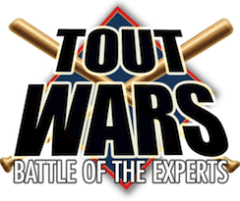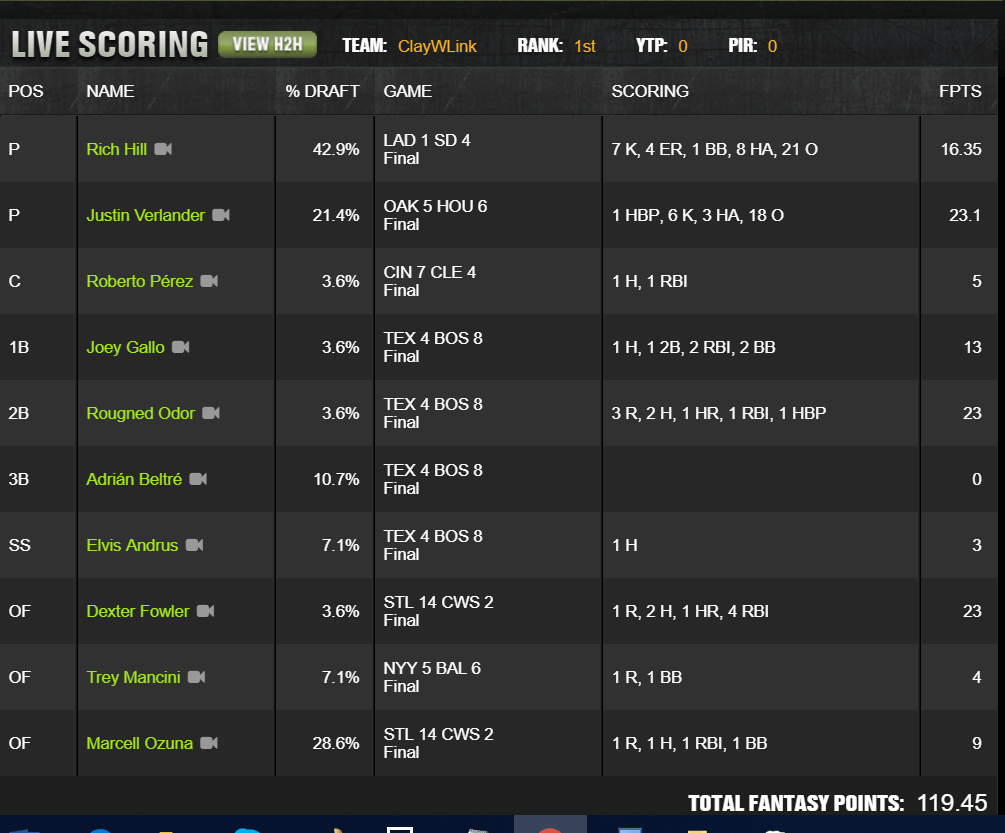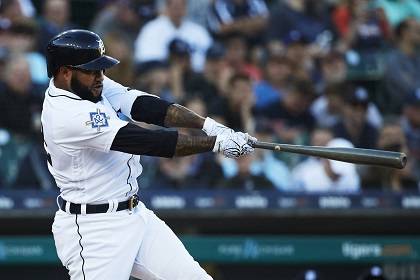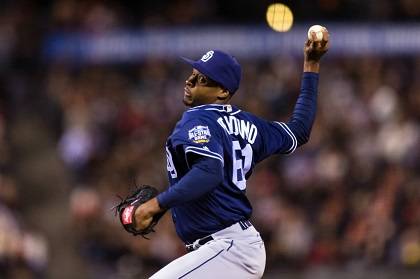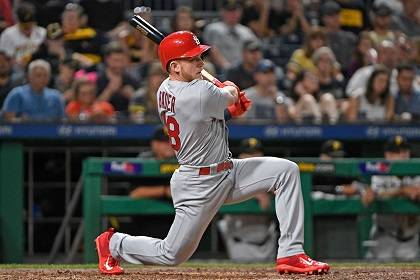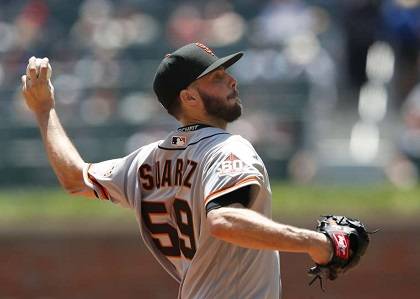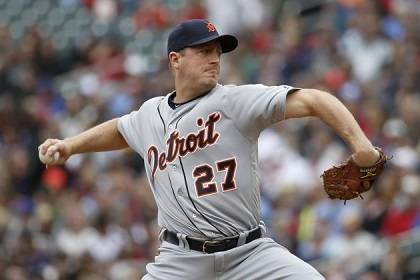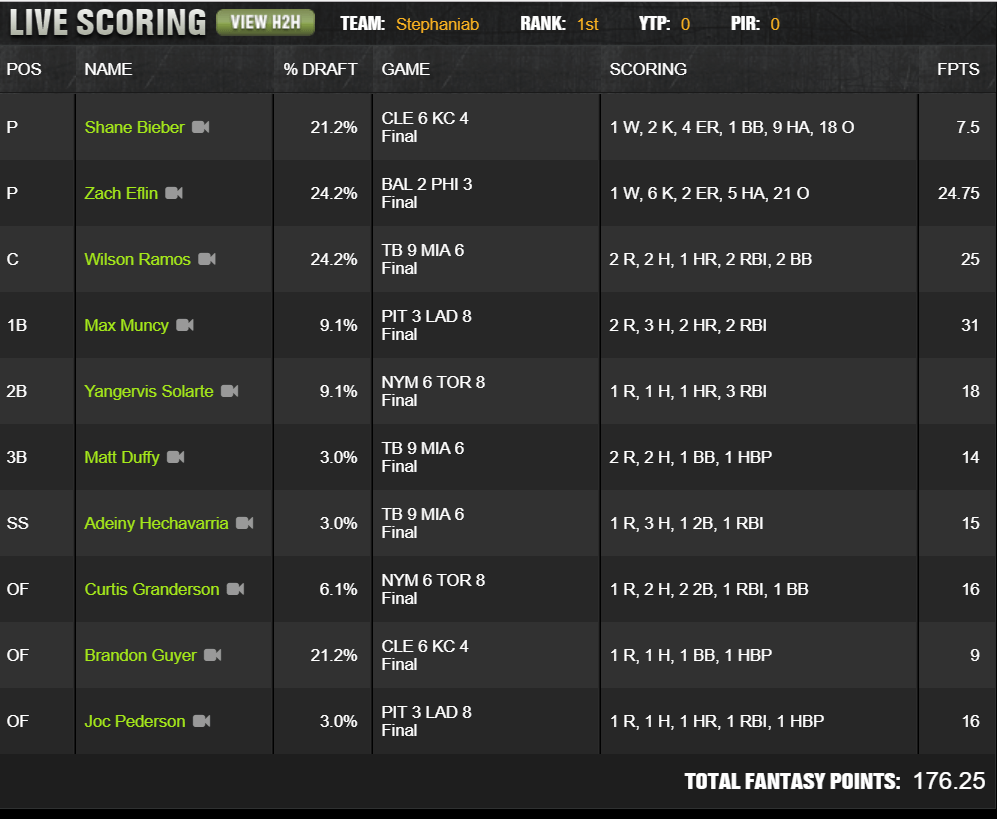Welcome to the weekly Tout Wars FAAB report, on its new home right here on the Tout Wars site. Each week, we’ll review the free agent acquisitions from all five leagues, with commentary from a league member, as well as yours truly. We changed the timing of the weekly run to 1 PM ET every Sunday, with the report posted later that afternoon so you’ll have time to digest and apply to your own leagues. In addition, I’ll be joining Lawr Michaels and Justin Mason on the Tout Wars Hour on the FNTSY Network every Sunday at 3:20 PM ET to discuss the results.
You can find the complete list of Tout Warriors here. Everyone starts with 1000 FAAB units, less any penalty incurred by finishing below a designated point in the standings. This is a means of keeping everyone motivated to keep playing all season long. The minimum bid is $0. FAAB units can be traded as well as rebated for players released off the DL.
The report will list all winning bids along with unsuccessful tries and contingencies. This provides the maximum level of information to help gauge interest on the players.
The American and National League only formats are 12-team leagues, as is the new points-based head to head league, The Mixed Auction and Draft each have 15 clubs. All the leagues have four reserves with an unlimited DL, expect the head to head league, which allows six reserves.
The headings above each league are links to publicly accessible sites where you can see standings, roster and a complete review of transactions. The initial auctions and drafts can be found here.
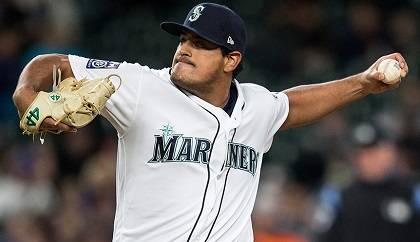
SUCCESSFUL BIDS
| PLAYER | WINNING BID | ||
| JPazos, Sea | Patrick Davitt 15 | ||
| ARomine, NYY | Larry Schechter 13 | Vlad Sedler 3 | Seth Trachtman 3 |
| RRua, Tex | Vlad Sedler 12 | Seth Trachtman 0 | |
| DSmithJr, Tor | Seth Trachtman 8 | ||
| CPoche, TB | Jason Collette 6 | ||
| JSucre, TB | Seth Trachtman 6 | Larry Schechter 6 | Vlad Sedler 2 |
| JoeSmith, Hou | Jason Collette 2 | ||
| SOhtaniP, LAA | Rick Wolf/Glenn Colton 2 | Chris Liss 0 | |
| JJames, Hou | Mike Podhorzer 1 | ||
| SReidFoley, Tor | Mike Podhorzer 1 | ||
| JSheffield, NYY | Rick Wolf/Glenn Colton 1 | ||
| WHarris, Hou | Doug Dennis 0 | Patrick Davitt 0 |
UNAWARDED BIDS
| PLAYER | |||
| MPerez, Tex | Vlad Sedler 9 | ||
| YRamirez, Bal | Vlad Sedler 4 | ||
| AReed, Hou | Rick Wolf/Glenn Colton 1 | ||
| DFreitas, Sea | Seth Trachtman 0 | ||
| RLaMarre, CWS | Seth Trachtman 0 | ||
| TRogers, Min | Patrick Davitt 0 |
Todd’s Take
Let’s look at everyone’s place in the standings along with remaining FAAB.
| TEAM | POINTS | FAAB |
| 1. Rick Wolf/Glenn Colton | 103 | $769 |
| 2. Mike Podhorzer | 73.5 | $952 |
| 3. Chris Liss | 73 | $90 |
| 4. Seth Trachtman | 72 | $430 |
| 5. Lawr Michaels | 71 | $236 |
| 6. Jeff Erickson | 68 | $1,039 |
| 7. Jason Collette | 60.5 | $515 |
| 8. Larry Schechter | 58.5 | $157 |
| 9. Vlad Sedler | 58.5 | $225 |
| 10. Doug Dennis | 56.5 | $1,012 |
| 11. Rob Leibowitz | 46.5 | $808 |
| 12. Patrick Davitt | 39 | $1,047 |
Colton and the Wolfman are mid-pack in terms of FAAB. Mike Podhorzer has the 4th most but it’s unlikely a significant player will fall to him. It looks like this isn’t the year to be hoarding FAAB in AL only with the likelihood of scant crossover help.
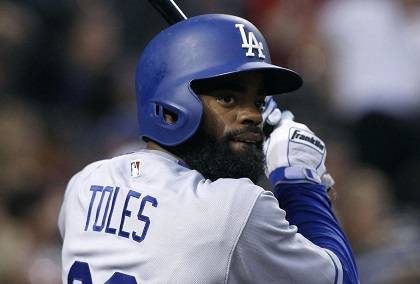
SUCCESSFUL BIDS
| PLAYER | WINNING BID | ||
| AToles, LAD | Brian Walton 80 | Phil Hertz 67 | Andy Behrens 49 |
| Craig Mish 11 | |||
| FReyes, SD | Brian Walton 50 | Andy Behrens 11 | Tristan H. Cockcroft 0 |
| JReyes, NYM | Andy Behrens 21 | Scott Wilderman 3 | |
| CBurnes, Mil | Todd Zola 17 | Phil Hertz 2 | |
| AConley, Mia | Grey Albright 11 | Phil Hertz 0 | |
| JMcNeil, NYM | Phil Hertz 5 | Lenny Melnick 1 | |
| VCaratini, ChC | Todd Zola 3 | Scott Wilderman 0 | |
| BHoladay, Mia | Lenny Melnick 1 | ||
| VRobles, Was | Tristan H. Cockcroft 1 | ||
| MKeller, Pit | Craig Mish 1 | ||
| MMoroff, Pit | Scott Wilderman 1 | ||
| ESantana, Pit | Phil Hertz 0 |
UNAWARDED BIDS
| PLAYER | |||
| JLuplow, Pit | Brian Walton 12 | Phil Hertz 9 | |
| RMadson, Was | Todd Zola 7 | ||
| PAlonso, NYM | Tristan H. Cockcroft 1 | ||
| MDenDekker, NYM | Grey Albright 1 | ||
| NCuevas, Col | Grey Albright 1 | ||
| EKratz, Mil | Todd Zola 0 | Lenny Melnick 0 | |
| BDuensing, ChC | Todd Zola 0 | ||
| RLopez, SD | Todd Zola 0 | ||
| RRosario, ChC | Todd Zola 0 | ||
| SKieboom, Was | Todd Zola 0 | ||
| STuivailala, StL | Todd Zola 0 | ||
| TLyons, StL | Todd Zola 0 | ||
| KTomlinson, SF | Scott Wilderman 0 | ||
| NOrf, Mil | Scott Wilderman 0 | ||
| TKelly, NYM | Scott Wilderman 0 | ||
| COswalt, NYM | Phil Hertz 0 | ||
| JWilson, ChC | Phil Hertz 0 | ||
| RBlack, SF | Phil Hertz 0 | ||
| RErlin, SD | Phil Hertz 0 | ||
| SKelley, Was | Phil Hertz 0 |
Todd’s Take
| TEAM | POINTS | FAAB |
| 1. Grey Albright | 88.5 | $706 |
| 2. Steve Gardner | 83.5 | $741 |
| 3. Mike Gianella | 76 | $230 |
| 4. Craig Mish | 75.5 | $328 |
| 5. Phil Hertz | 69 | $64 |
| 6. Scott Wilderman | 62.5 | $328 |
| 7. Brian Walton | 62 | $445 |
| 8. Andy Behrens | 59.5 | $577 |
| 9. Tristan H. Cockcroft | 59 | $1,069 |
| 10. Derek Carty | 57.5 | $971 |
| 11. Todd Zola | 53.5 | $30 |
| 12. Lenny Melnick | 33.5 | $29 |
I’ll go out on a limb and predict Tristan Cockcroft will bid $972 on Manny Machado on Sunday night.
The top is interesting as the front two teams are 4th and 3rd with respect to remaining FAAB units. The league may come down to the acquisition by each after the deadline deals flesh out.
For what it’s worth, when looking at the AL FAAB totals, I didn’t suggest it was a mistake for the lowest teams to still have a ton of FAAB left, knowing all too well where the bottom clubs are with the rest of their budget.
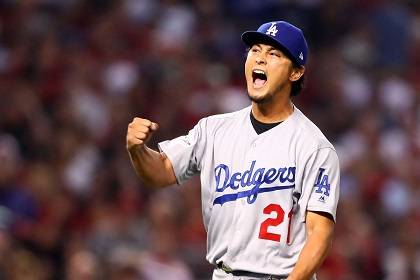
SUCCESSFUL BIDS
| PLAYER | WINNING BID | ||
| YDarvish, ChC | Fred Zinkie 174 | Zach Steinhorn 12 | |
| ARosario, NYM | Ray Flowers 46 | Bret Sayre 18 | Tim Heaney 7 |
| Tim McLeod 6 | |||
| DStraily, Mia | Zach Steinhorn 33 | Tim McLeod 6 | |
| CFrazier, NYY | Scott Swanay 24 | ||
| LGiolito, CWS | Tim McLeod 15 | Tim Heaney 3 | |
| AToles, LAD | Scott Swanay 13 | Scott Swanay 24 | |
| JJeffress, Mil | Zach Steinhorn 13 | Scott Swanay 1 | |
| JMcNeil, NYM | Ron Shandler 8 | ||
| JCave, Min | Scott Engel 8 | ||
| CMaybin, Mia | Tim Heaney 7 | Al Melchior 6 | |
| JHellickson, Was | Al Melchior 6 | ||
| PAlonso, NYM | Bret Sayre 6 | ||
| JKang, Pit | Bret Sayre 6 | ||
| EDiaz, Pit | Fred Zinkie 6 | Tim McLeod 5 | |
| JBonifacio, KC | Scott Engel 5 | ||
| ERamos, Phi | Scott Swanay 3 | ||
| ONarvaez, CWS | Scott Engel 3 | ||
| RBraun, Mil | Fred Zinkie 2 | ||
| KCrick, Pit | Bret Sayre 1 | ||
| JUrias, LAD | Tim Heaney 1 |
UNAWARDED BIDS
| PLAYER | |||
| FHernandez, Sea | Zach Steinhorn 28 | Ray Flowers 9 | |
| EJackson, Oak | Ray Flowers 9 | ||
| DRobertson, NYY | Zach Steinhorn 8 | Fred Zinkie 2 | Scott Swanay 0 |
| TKemp, Hou | Al Melchior 6 | Fred Zinkie 2 | |
| JWendle, TB | Scott Engel 4 | Fred Zinkie 2 | |
| RMoronta, SF | Scott Swanay 3 | ||
| LGarcia, CWS | Scott Engel 3 | Fred Zinkie 2 | |
| SCishek, ChC | Scott Swanay 2 | ||
| RStanek, TB | Fred Zinkie 2 | Scott Swanay 0 | |
| CGomez, TB | Tim Heaney 1 | ||
| KWong, StL | Tim Heaney 1 | ||
| SDuggar, SF | Scott Engel 1 | ||
| MBarnes, Bos | Bret Sayre 1 | Scott Swanay 0 | |
| JAnderson, LAA | Tim Heaney 0 | ||
| KSmith, CWS | Scott Engel 0 |
Fred Zinkie’s Commentary
In what was likely my biggest overpay since I joined Tout Wars in 2011, I grabbed Yu Darvish at $174 with a runner-up bid of $12. Perhaps some of my leaguemates didn’t realize that Darvish has been returned to waivers, and others likely doubt that he will amount to anything in the second half. Still, his upside is probably greater than that of anyone else who will be on waivers from this point forward, and I had more FAAB than I knew what to do with. And grabbing injured players during the abbreviated week is generally a solid plan, as I can move Darvish to my DL in just a few days. I made a similar move with Ryan Braun, who cost me $2 and will effectively cost me three days of Denard Span before I can stash him on my DL. Finally, I made a low-cost acquisition of Elias Diaz, who has been respectable at the dish this year and should play regularly until Francisco Cervelli recovers from (another) concussion.
Amed Rosario garnered a bid of $46 by Ray Flowers. The 22-year-old is going to be a liability in the OBP category (lifetime .283 mark), but he was a coveted prospect at this time last year and has some speed. Dan Straily also garnered a significant bid, fetching $33 from Zach Steinhorn, who is likely looking to fill out his rotation and pick up extra whiffs and wins in this short week. Straily faces the Rays on Friday. My favorite bid by a leaguemate was Ron Shandler’s $8 acquisition of Jeff McNeil, who is thriving in the Minors this year (1.043 OPS) and should get a shot with the Mets by the beginning of August. Other players who were targeted as stash additions during this short week were Jung Ho Kang (Bret Sayre, $6), Peter Alonso (Sayre, $6) and Julio Urias (Tim Heaney, $1).
Todd’s Take
| TEAM | POINTS | FAAB |
| 1. Tim Heaney | 127.5 | $59 |
| 2. Fred Zinkie | 102 | $234 |
| 3. Jeff Zimmerman | 100 | $18 |
| 4. Derek VanRiper | 92 | $130 |
| 5. Joe Pisapia | 91 | $313 |
| 6. Zach Steinhorn | 89.5 | $257 |
| 7. Scott Engel | 79.5 | $34 |
| 8. Bret Sayre | 79 | $299 |
| 9. Brent Hershey | 70 | $450 |
| 10. Ray Flowers | 68.5 | $220 |
| 11. Al Melchior | 68 | $93 |
| 12. Tim McLeod | 67.5 | $219 |
| 13. Scott Swanay | 58 | $70 |
| 14. Scott Pianowski | 57.5 | $267 |
| 15. Ron Shandler | 50 | $280 |
Obviously, mixed league formats don’t deal with crossover players which is why the totals are much lower.
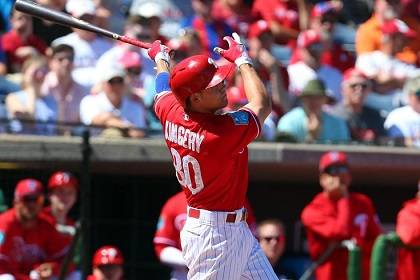
SUCCESSFUL BIDS
| PLAYER | WINNING BID | ||
| SKingery, Phi | Charlie Wiegert 122 | ||
| TRoss, SD | Gene McCaffrey 27 | Jeff Boggis 12 | |
| JGyorko, StL | Rudy Gamble 6 | ||
| ELauer, SD | Gene McCaffrey 3 | ||
| SDuggar, SF | Perry Van Hook 0 | ||
| VCaratini, ChC | Perry Van Hook 0 | ||
| JUrias, LAD | Perry Van Hook 0 |
UNAWARDED BIDS
| PLAYER | |||
| RBorucki, Tor | Gene McCaffrey 3 | ||
| JCave, Min | Perry Van Hook 0 | ||
| CaJoseph, Bal | Perry Van Hook 0 | ||
| CIannetta, Col | Perry Van Hook 0 | ||
| RGsellman, NYM | Perry Van Hook 0 | ||
| LTrivino, Oak | Perry Van Hook 0 | ||
| CFerguson, LAD | Perry Van Hook 0 | ||
| MStrahm, SD | Gene McCaffrey 0 | ||
| TClippard, Tor | Gene McCaffrey 0 | ||
| FLiriano, Det | Gene McCaffrey 0 |
Rudy Gamble’s Commentary
Todd’s Take
| TEAM | POINTS | FAAB |
| 1. Rudy Gamble | 116.5 | $503 |
| 2. Adam Ronis | 114.5 | $605 |
| 3. D.J. Short | 106 | $552 |
| 4. Michael Beller | 100.5 | $145 |
| 5. Scott White | 99 | $220 |
| 6. Greg Ambrosius | 84 | $170 |
| 7. Gene McCaffrey | 83 | $96 |
| 8. Corey Parson | 81 | $703 |
| 9. Charlie Wiegert | 77.5 | $696 |
| 10. Perry Van Hook | 74.5 | $248 |
| 11. Jeff Boggis | 60 | $138 |
| 12. Ray Murphy | 59.5 | $234 |
| 13. Tim McCullough | 51.5 | $397 |
| 14. Tom Kessenich | 51.5 | $195 |
| 15. Anthony Perri | 41 | $561 |
Look like we’re in for a fun finish with the top couple of teams also having a lot of FAAB to take advantage of the impending players yet to emerge.
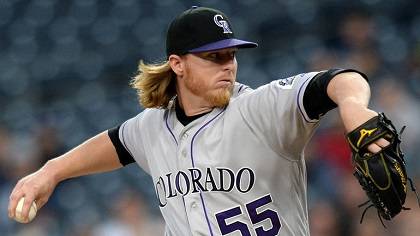
SUCCESSFUL BIDS
| PLAYER | WINNING BID | ||
| JGray, Col | Dr. Roto 108 | Kyle Elfrink 99 | Paul Sporer 61 |
| Stephania Bell 47 | Jake Ciely 23 | ||
| Andrea LaMont 13 | |||
| SCastro, Mia | Kyle Elfrink 57 | ||
| NKingham, Pit | Paul Sporer 44 | Dr. Roto 19 | Jake Ciely 13 |
| Peter Kreutzer 7 | |||
| RGsellman, NYM | Kyle Elfrink 33 | ||
| JBell, Pit | Stephania Bell 27 | ||
| EJackson, Oak | Kyle Elfrink 21 | Andrea LaMont 12 | Peter Kreutzer 7 |
| KCalhoun, LAA | Stephania Bell 16 | Andrea LaMont 14 | |
| IHapp, ChC | Dr. Roto 14 | Andrea LaMont 0 | |
| AHedges, SD | Dr. Roto 12 | Jake Ciely 10 | Michael Rathburn 6 |
| Andrea LaMont 1 | |||
| WSmith, SF | Paul Sporer 8 | ||
| MHarvey, Cin | Peter Kreutzer 7 | Paul Sporer 7 | Justin Mason 2 |
| LTrivino, Oak | Andrea LaMont 6 | Paul Sporer 7 | |
| JBradley, Bos | Peter Kreutzer 5 | Andrea LaMont 2 | |
| MFranco, Phi | Andrea LaMont 4 | Andrea LaMont 0 | |
| AKnapp, Phi | Michael Rathburn 3 | Dr. Roto 1 | |
| DStraily, Mia | Jake Ciely 3 | Paul Sporer 5 | |
| DMesoraco, NYM | Paul Sporer 2 | ||
| SGaviglio, Tor | Justin Mason 1 | ||
| ADeSclafani, Cin | Justin Mason 1 | ||
| CRichard, SD | Peter Kreutzer 1 | Justin Mason 1 | |
| ONarvaez, CWS | Andrea LaMont 0 | Jake Ciely 0 | |
| MGarver, Min | Jake Ciely 0 | Dr. Roto 1 | |
| MKepler, Min | Andrea LaMont 0 | Dr. Roto 9 | |
| TRichards, Mia | Justin Mason 0 | Dr. Roto 5 |
UNAWARDED BIDS
| PLAYER | |||
| MCanha, Oak | Peter Kreutzer 4 | ||
| ARomine, NYY | Michael Rathburn 3 | ||
| KSuzuki, Atl | Paul Sporer 2 | ||
| RChirinos, Tex | Paul Sporer 2 | ||
| WFlores, NYM | Andrea LaMont 2 | ||
| FRodney, Min | Andrea LaMont 0 | ||
| KMorales, Tor | Andrea LaMont 0 | ||
| SLeon, Bos | Andrea LaMont 0 |
Todd’s Take
| TEAM | PCT | FAAB |
| 1. Jake Ciely | 0.700 | $290 |
| 2. Clay Link | 0.683 | $54 |
| 3. Dr. Roto | 0.633 | $128 |
| 4. Justin Mason | 0.633 | $190 |
| 5. Kyle Elfrink | 0.500 | $392 |
| 6. Peter Kreutzer | 0.500 | $356 |
| 7. Michael Rathburn | 0.467 | $105 |
| 8. Paul Sporer | 0.417 | $424 |
| 9. Howard Bender | 0.400 | $122 |
| 10. Andrea LaMont | 0.367 | $137 |
| 11. Stephania Bell | 0.367 | $504 |
| 12. Jeff Mans | 0.333 | $203 |
Keep in mind even though this is a head to head league, there’s no playoffs, best record wins.
